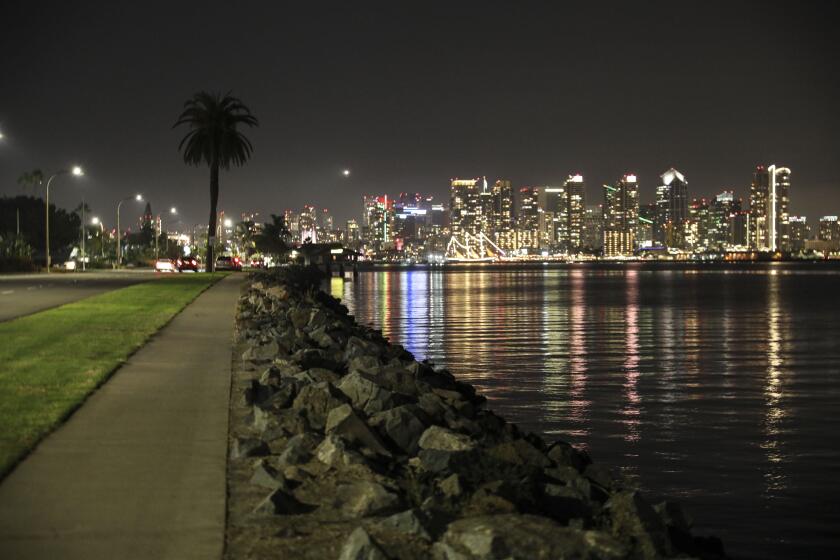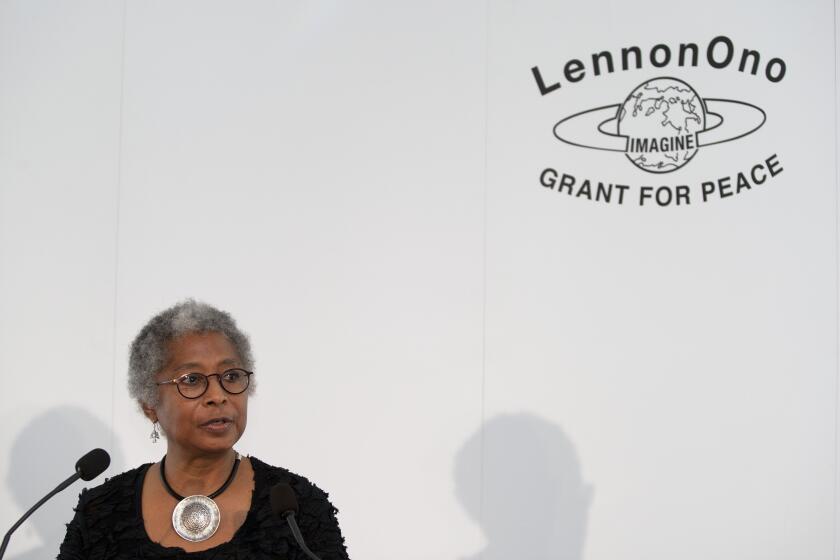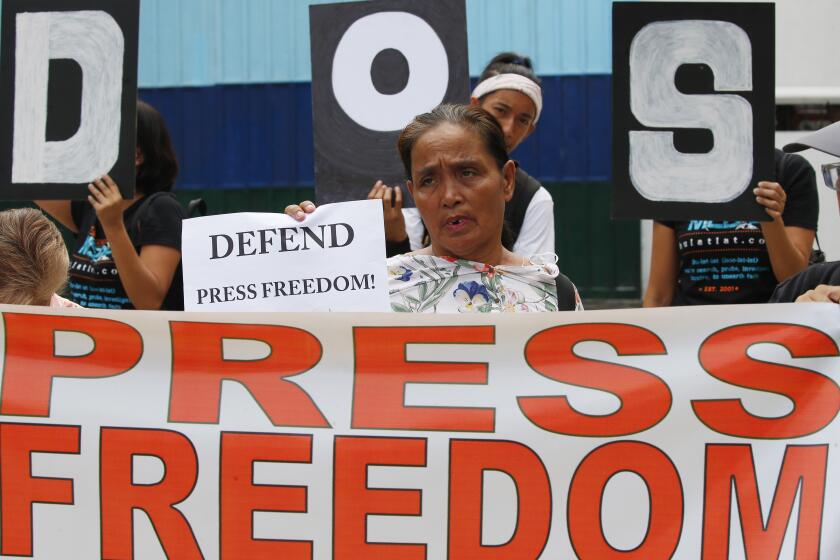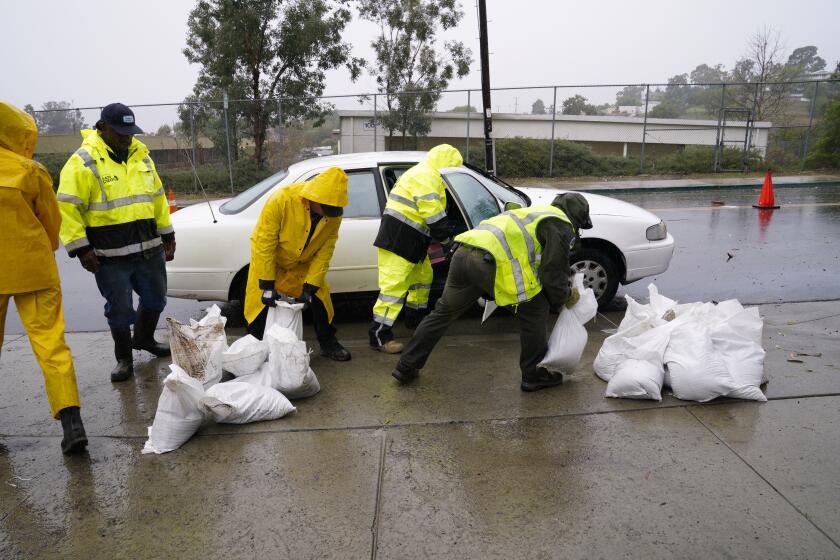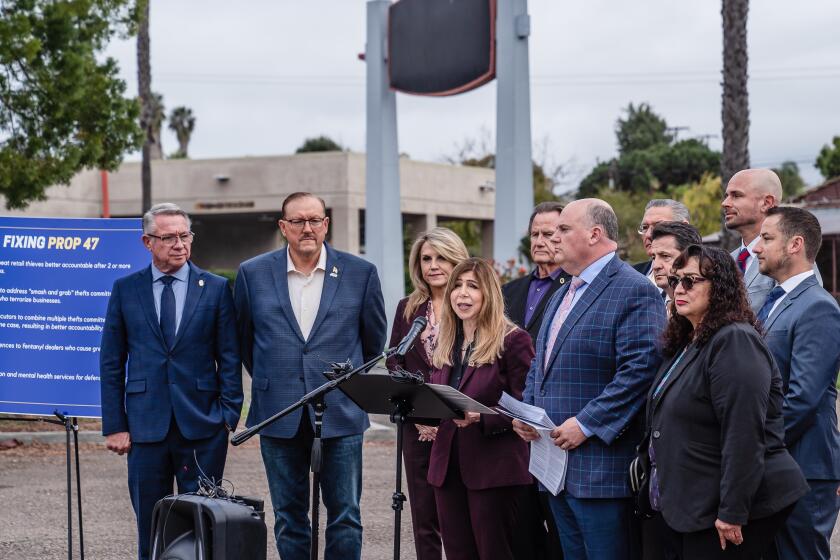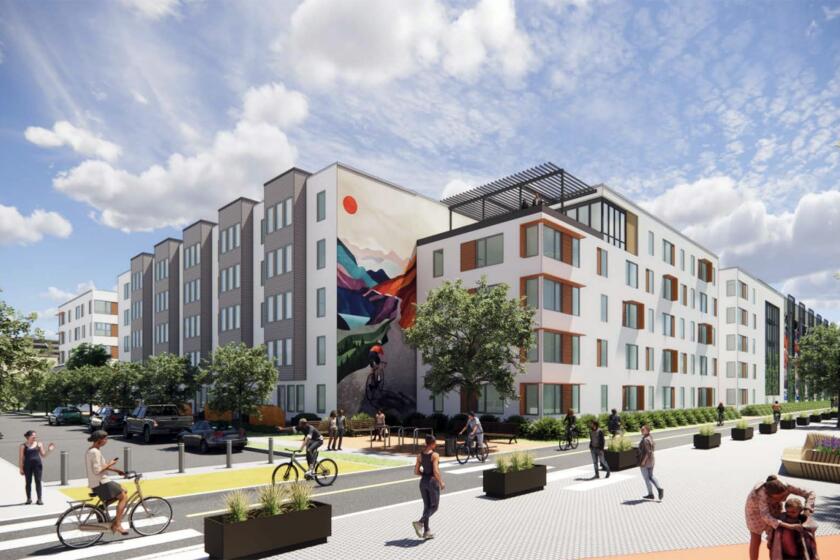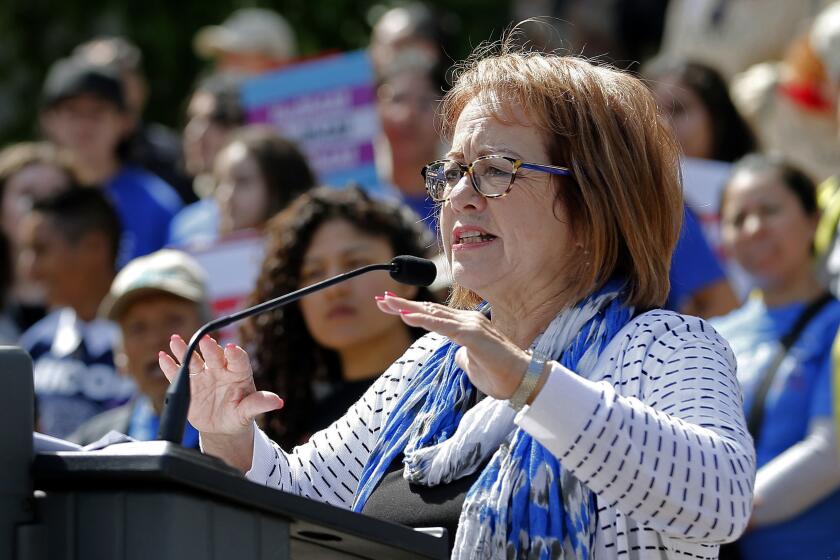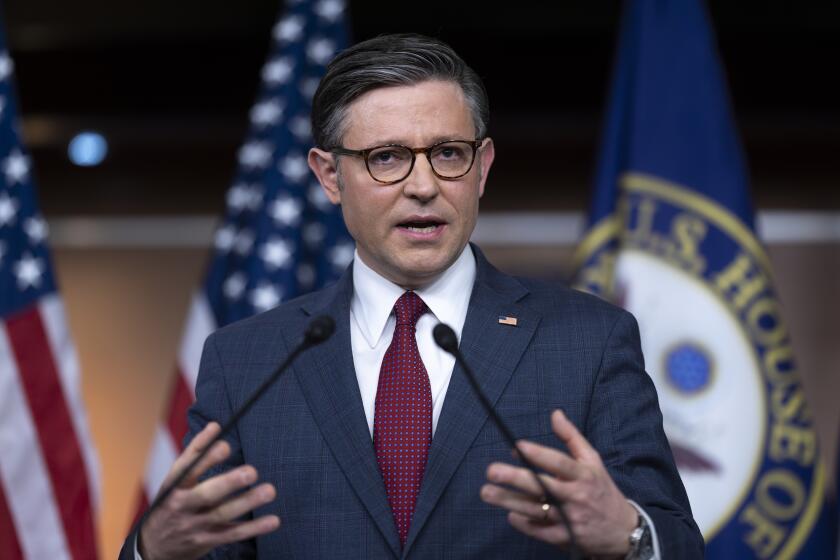Sleeping Giant: How the Latino vote could influence California and the presidency in 2020
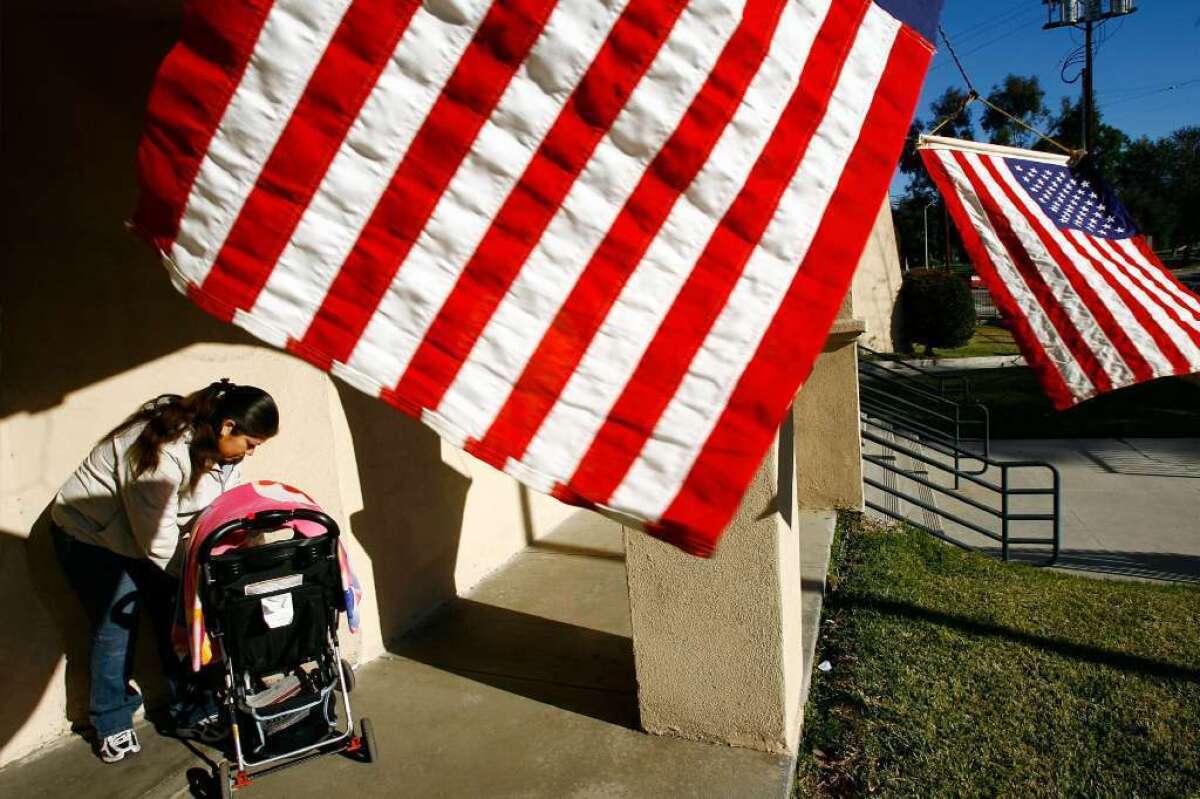
Latino voters turned out at unprecedented rates in 2018 and will become the largest minority voting bloc by 2020
Four leading contenders for the Democratic Party’s presidential nomination will come to San Diego to speak Monday at the UnidosUS conference, which will draw thousands of Latino attendees to downtown.
Former Vice President Joe Biden and Sens. Kamala Harris, Amy Klobuchar and Bernie Sanders are expected to appear at the forum.
UnidosUS, the nation’s largest Latino civil rights and advocacy organization, says the conference’s drawing power is one of many signs that Latinos’ political influence is growing.
Latinos could have an unprecedented influence on choosing the Democratic nominee, said Mindy Romero, director of the California Civic Engagement Project, a research center at the University of Southern California’s Price School of Public Policy in Sacramento.
“When (candidates) are up on the debate stage, developing policy and engaging outreach plans, they are thinking about Latinos, or at least they should be,” she said. “The road, at least through California, is through the Latino community.”
For the first time, Latinos in 2020 will be the largest racial or ethnic minority group in the electorate with 32 million registered to vote, according to the Pew Research Center.
California and Texas — the states with the most delegates — will vote earlier than usual in the presidential primary cycle, trailing Iowa, New Hampshire and Nevada.
Latinos make up only 6 percent of Iowa’s population and 3 percent of New Hampshire’s, according to Pew, but there were more than 13.2 million eligible Latino voters as of 2018 in California and Texas.
During the 2018 midterm election, Latino turnout surged to more than 40 percent of eligible voters, with 11.7 million Latinos casting ballots, according to Pew. That’s a sharp increase over the 6.8 million Latinos who voted in the 2014 midterm.
The Latino vote was particularly influential in Arizona, California, Florida, Nevada and New Jersey, helping to swing a Senate seat and multiple congressional districts, including seven in California.
California, which has the nation’s largest Latino population, saw 35.9 percent of eligible Latino voters cast a ballot in 2018, up from 17.3 percent in 2014, according to the California Civic Engagement Project.
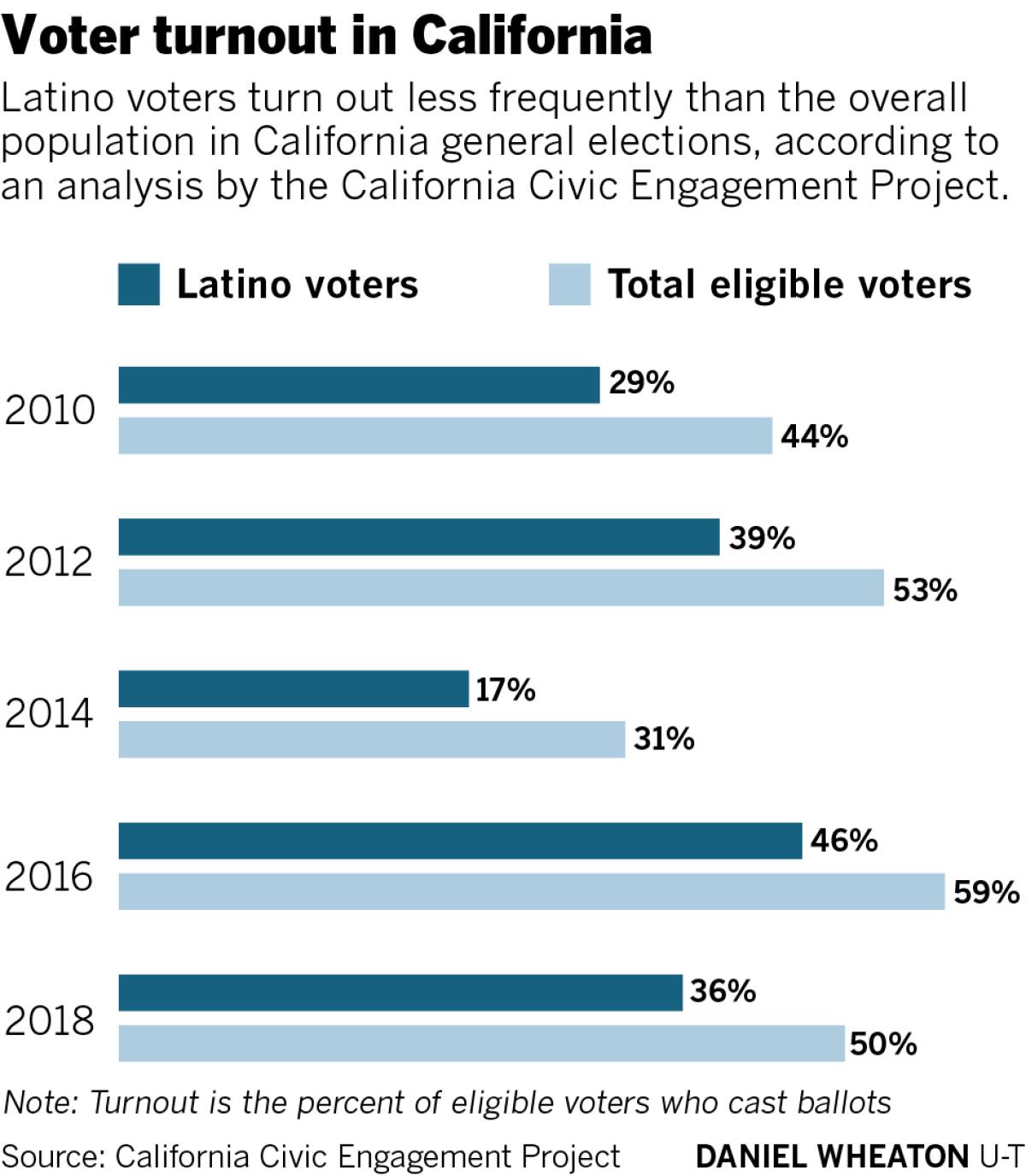
Latinos in California also increased their share of the overall vote in the state’s midterm electorate to 21.2 percent in 2018, up from 15.4 percent in 2014.
However, Latinos remain underrepresented among California’s voting electorate compared to the 29.5 percent share of the state’s eligible voting population, Romero said.
“It was a good year, but they are still underrepresented,” Romero said. “There is still a ways to go.”
Lack of outreach
Since 2000, the Latino population has grown 63 percent and accounted for nearly half of the country’s overall population growth.
Latinos currently make up 17.8 percent of the U.S. population and are expected to be a quarter of the population by 2040.
They have long trailed other ethnic groups in exercising voting power.
In 1996 Latinos made up 4.7 percent of total U.S. voters, despite accounting for 6.2 percent of all eligible voters. Eligible voters are people 18 and older who are U.S. citizens.
That disparity has widened. In 2016, Latinos accounted for 9.2 percent of all voters but 11.9 percent of all eligible voters, according to the California Civic Engagement Project.
Experts and community leaders point to several reasons why Latino turnout has lagged.
The failure to register Latinos to vote is part of the issue, said Christian Arana, policy director at the Latino Community Foundation, which funds efforts to mobilize Latinos in California.
“You will never see higher turnout unless you see higher rates of voter registration,” he said.
The age of the Latino population is also an impact. Romero said the Latino population is younger than the general population, especially in California, and young people tend to vote less.
Romero added that many Latinos find it hard to see why voting matters when candidates and campaigns rarely engage them.
“Looking forward, as Latinos become a growing segment of the electorate and there is a tipping point in an ever-growing number of districts, that should get the attention of candidates and campaigns,” Romero said. “But there is still a huge gap in terms of funding and resources that go out to the Latino community.”
Arana echoed the point, saying the biggest issue is that candidates often fail to show up in Latino communities.
“We can get as many people as we want registered to vote, but at the end of the day the responsibility of campaigns and candidates comes into play,” Arana said. “There is never a substitute for a face-to-face interaction.”
More than anti-Trump
Latinos began showing more force at the polls in 2018 because of the same factors that bolstered overall turnout — massive media coverage and a sense that the election would have a major impact, experts said.
The “Trump Factor” helped motivate the community, they said.
Last month, Vice President Mike Pence called Latinos “one of the most important coalitions” for President Donald Trump’s reelection prospects. But polls show the Republican incumbent with a small slice of Latino support.
UnidosUS President Janet Murguia said recently that the group did not invite Trump to speak at its annual conference, even though they asked some of the Democratic candidates.
“The attacks by this president, both rhetorical and in policy, have been so cruel we did not believe ... candidate Trump deserved the platform we were offering,” Murguia said.
Polling in June by Mason-Dixon Polling Strategy showed Trump struggling with Latino voters in California, Florida and Texas. Experts point to his immigration policies and some of his controversial statements.
“One of the things the Trump administration has done for many Latinos — but not all — is he has given something really tangible, a strong salient reason to participate,” Romero said.
“For a good number of Latinos, you’re seeing neighbors and friends and kids reacting and being concerned about these policies.”
In California, 26 percent of Latino voters would like to see Trump reelected, compared to 66 percent who prefer a Democrat, according to the Mason-Dixon survey.
In Florida and Texas, Latino support for Trump’s reelection is 25 percent and 34 percent respectively.
On the other hand, candidates trying to appeal to Latino voters mostly by attacking Trump or talking about immigration are making a mistake, some activists and researchers say.
“In 2016, there was really a lost opportunity when it came to outreach to the Latino vote because so much was a rallying cry around Trump,” Romero said. “Going into 2020, I think candidates will be well-served if they have a broader approach to the Latino community that is not only Trump-based.”
An April poll by Latino Decisions and the NALEO Educational Fund in Los Angeles found that wages and health care costs were viewed as the top issues facing the Latino community.
Arana, of the Latino Community Foundation in California, said candidates should try exploring a variety of issues through a Latino lens.
For example, there are about 1 million people in California who don’t have access to clean drinking water, he said, many of whom live in the Central Valley. In those communities and in other Latino communities, local groups would like a champion to address how the environment and climate change affect communities of color.
“Let’s be very clear here, Latinos care about higher education, climate change, ‘Can I afford a house one day,’” Arana said. “There are whole other issues we want to hear about and, more often than not, we are pigeonholed.”
Impact on state, presidency
If congressional and presidential campaigns pay attention and invest in the Latino vote in 2020, it could yield big dividends, experts said.
During the 2018 midterm election, the impact of the Latino vote was instrumental in flipping seven California congressional seats to Democrats, experts said. McClatchy DC reported sharp increases in Latino turnout in all seven districts.
Democratic Central Valley Rep. T.J. Cox’s success attracting Latino voters was considered a big part of his upset victory over Republican incumbent David Valadao. The Fresno Bee reported that a post-election poll showed 70 percent of Latinos surveyed supported Cox.
In San Diego County, there are likely to be two closely watched congressional races in 2020, northern San Diego and southern Orange County’s 49th Congressional District and East County’s 50th District.

Data shows a sizeable opportunity for candidates who can mobilize the Latino vote.
Of the 49th District’s 521,000 eligible voters, about 21 percent, or 109,000 people, are Latino. Of the 50th District’s 509,000 voters, Latinos represent nearly 25 percent, or 126,000, of the voters.
An estimated 47,429 and 63,742 Latinos are registered to vote in the San Diego portions of those respective districts, according to data compiled by the San Diego County Registrar of Voters.
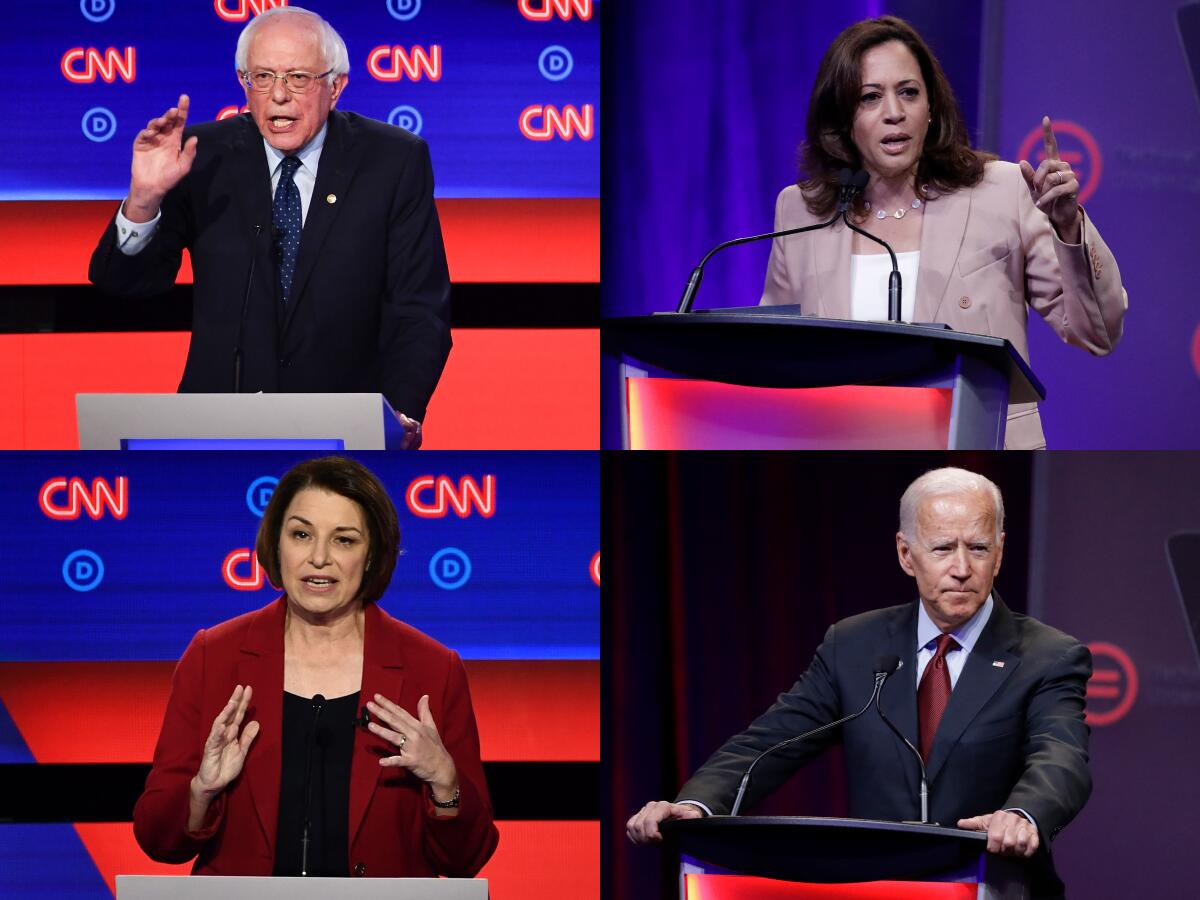
Staff writer Lauryn Schroeder contributed to this report.
Get Essential San Diego, weekday mornings
Get top headlines from the Union-Tribune in your inbox weekday mornings, including top news, local, sports, business, entertainment and opinion.
You may occasionally receive promotional content from the San Diego Union-Tribune.

